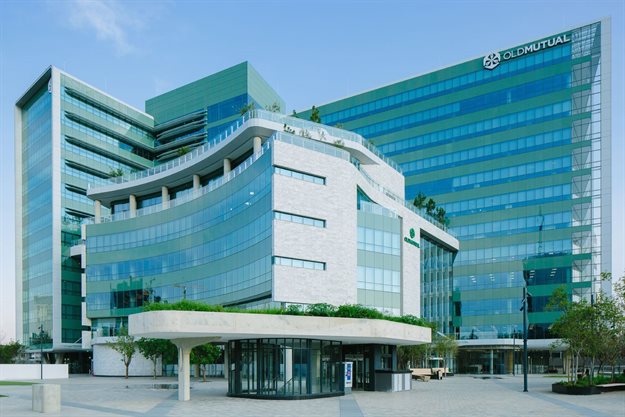






We’re seeing urban renewal redevelopment taking place in cities, where old buildings are demolished to be replaced by new mixed-use developments. There is an increased need for effective use of space in both city centres, and property developers are responding.
Mixed-use developments offer the ability to live, work and play in close proximity within a secure precinct, providing a range of amenities while minimising travel time and expense. In an ideal scenario, these pedestrianised precincts can offer safety and security, convenience, sustainable technologies, connectivity and increasingly, green nodes in an urban setting.
Profica specialises in project management on projects throughout Africa and is also involved in the early-stage conceptualisation and pre-development planning on these types of projects. Our team has gained learnings from multiple projects across Africa, including the award-winning project management of Mutual Place in the heart of Sandton, a large super basement integrating five multipurpose buildings.

From a developers perspective, for mixed-use developments, the challenge lies in bringing a mix of residential, retail, and office buyers and tenants on stream at a particular time, which doesn’t necessarily coincide with the cyclical demand for these sectors in the property cycle. With African economies struggling, the biggest concerns developers have about mixed-use precincts is securing and keeping tenants at the right time.
Large ‘ego’ projects which make limited financial sense can take a long time to reach success, for example, Eko Atlantic in Nigeria and some of the high-rise towers in Nairobi, as they don’t follow the property investment fundamentals. We must understand the objectives, purpose and functionality of mixed-use precincts and how they actually work. Of course, our clients and investors require their developments to be financially viable and they need to be planned with return on investment in mind.
Local government, the private sector, economic development agencies, the community, multiple development teams and possibly multiple owners must collaborate to address planning, management, capital resources and risk.
Effectively financing a multi-phased mixed-use project, addressing environmental, transportation and infrastructure issues and having a clear insight into the expected market demand for a mixed-use development are some of the challenges that must be tackled in a collaborative master plan.
Too often, large mixed-use precincts have failed during the first phase, due to the large cost of infrastructure required in phase one to enable the developments going forward. We recommend that one master plan coordinates a number of different developments, each of which can develop according to demand. So it’s about planning for a final product - an integrated mixed-use development - but also one which can be constructed in various stages at different times and still provide a good environment for the users during development.
While challenging, designing, owning, or managing a mixed-use facility opens the door to multiple opportunities. Mixed-use facilities not only conserve valuable land resources, but also present opportunities for building efficiency, energy efficiency, and sustainability. As space is used 24 hours a day, developers and owners can make it work harder in terms of returns and also find ways to be more energy efficient in the long term, sharing services, parking, and other amenities on a countercyclical basis.
However, while sustainable and green efforts are increasingly important to owners as improved energy efficiency can save on costs, they also assess whether the financial return on investment is worth it when choosing systems and materials. Going green requires a very big shift from first-cost thinking, to life-cycle cost thinking.
As Profica works on more mixed-use projects, different approaches to the fundamentals of space sharing and optimisation are emerging. Parking, for example, provides real opportunities to save space when managed carefully. We’re seeing shared countercyclical parking provided for office use during the day, residential at night. Creative ways to manage challenges such as waste, smells, traffic, and noise transferring from one use of the building, such as a busy restaurant or shop, to residential areas are also being found.
The importance of future-proofing developments is key, allowing for changes of use in the future. For example, with more efficient public transport coming online in Sandton, the large basement parking areas in some of the corporate office building will not be fully utilised. These areas, if planned for, can then be used later for ‘last mile’ logistics in congested city centres or if the parking areas are above ground, it’s worth making the height between floors higher so that the areas can be converted to commercial space later on.
It’s also not just about the mix of uses, but within each use, there are specific variances that need to be considered. For example, residential units for rental in city centres are designed with rental affordability in mind, essentially a different product from owner-occupied units which are longer-term. These nuances all affect how the mixed-use developments integrate and provide amenities for the different residents and visitors.
Overall, mixed-use developments are very positive and, if carefully managed from the outset, provide major returns on investment. Enabling people to live, work and play in a well-designed precinct fundamentally transforms lifestyles and we expect the trend to continue across Africa.
Financing – Because a mixed-use development generally requires phased-in development periods, it may be difficult to finance compared to a single-use project of a similar size due to the various asset classes included in one development. The type of tenants and the strength or covenant of these tenants will have an effect on the funding parameters.
Market demand – For a project to be a success, it must attract a significant level of market demand in its own right. Market analysis to assess the supply and demand for proposed multiple uses is critical. Typically different sectors have varying rental strengths and vacancies from each other and are at different points in the property cycle at any given time.
Effective design and project management – Developing a master plan for a mixed-use development is critical to the financial success of a project. It must allow for phasing and not encumber the first phase with too much enablement and infrastructure cost.
Public and political support – Community members and key stakeholders need to be engaged early in the project. Development plans need to highlight infrastructure and transportation use, the economic benefits of the project to the community, regulatory challenges, conformance to zoning codes and availability of developer incentives. Don’t underestimate the impact the neighbours and local residents can have on the delivery of such projects.
Site location, size and topography – Site access, connectivity to other land uses, access to multiple modes of transportation, and vehicle and pedestrian circulation systems are some of the critical factors for project success.